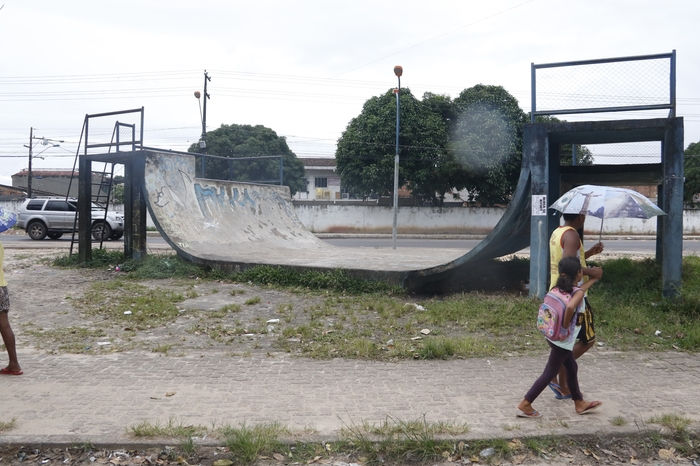Tapanã: the rubber route in Belém and the 'Hospedaria do Inferno'
- rocksmithclub
- Oct 22, 2020
- 4 min read
Updated: Oct 27, 2020
https://www.oliberal.com/belem/tapan%C3%A3-a-rota-da-borracha-em-bel%C3%A9m-e-a-hospedaria-do-inferno-1.143631
Formerly known as "Pouso do Tapanã", the neighborhood that today has the same name started to be occupied in the rubber cycle. It was an area initially composed of large farms. And one property in particular was very well known: the Tapanã inn, which became known as "Hospedaria do Diabo" or "Hospedaria do Inferno". This is because the "rubber soldiers", mostly from the Northeast, suffered all kinds of mistreatments in that place.
For those who need a quick history lesson on these terms: during World War II, Brazil made agreements with the United States to supply the Allied Forces with rubber. Hence, there was a large recruitment of people who would be the "rubber soldiers", people in charge of the mission of extracting and producing rubber. Many were poor people, deluded by promises of recognition, wealth and new life.
Between 1942 and 1953, several Northeasterners took on the mission. On the way through Belém, the rubber soldiers were staying in a shed with terrible conditions. It was the "Pouso do Tapanã", the "Hospedaria do Inferno" or the "Hospedaria do Diabo", as portrayed by the PhD in History Lara de Castro, from the Federal University of Bahia. It was where the promises of three good daily meals could not be fulfilled without a considerable productive counterpart from the workers. Many people were hungry and practically lived in slave labor.
The rubber cycle ended, so did the war and many people, somehow, continued to look for opportunities in the business. And they continued on to the Tapanã inn. There was no internet and communications were difficult. There was no way to warn others not to go to that situation. The historical estimate is that at least 63,000 people passed through the inn and were then unable to return home. Suffering was a keynote in the daily lives of those left to fend for themselves.

The end of the rubber dream and the inequality that followed
Obviously, there was no way a shed could handle everyone. Soon, the forgotten rubber soldiers and their families began a process of occupation of the neighborhood. Some farms were invaded, housing nuclei were being formed. Still distant from what would become the "pot crowd", as portrayed by a melody that reinforces the pride and love for the neighborhood that the residents have, despite everyday problems. By the way, this is a story about the identity of the neighborhood that is practically lost due to the lack of records. Even here, the neighborhood is needy.
The neighborhood developed in poverty and social inequality. Eventually, real estate speculation brought some progress, but little in the face of everything the area and residents need to live better. Some companies have settled in the area, with the promise of employment and social transformation of the neighborhood, such as Brasilit, Frimapa and Socipe. But it was a promise that was not fulfilled as expected and there are still unemployed in Tapanã. As in all of Brazil.

As a result, the neighborhood practically no longer has preserved fragments of history or tourist attractions. What is there is the Jesus Good Samaritan church; a food, commerce and entertainment complex, which also has one of the last public skate ramps, also known as the "rap ramp"; and a public cemetery.
Real estate speculation brought better housing and some infrastructure, but did not solve anything
"There is a great performance of the real estate market along Augusto Montenegro, including vertical condominiums, which were implemented after the horizontal condominiums. With that came stores, supermarkets and even a shopping center, but it does not mean that it is a progress, since there is parts of the neighborhood without infrastructure, without the same accessibility conditions, compared to other areas of Augusto Montenegro ", points out José Júlio.
Tapanã is in a development center in the expanded area of Belém. It is surrounded by some of the main roads in the capital, such as Avenida Augusto Montenegro, Arthur Bernardes Highway, Tapanã Highway and Yamada Highway. But many people just pass through the neighborhood, which has invisible security, sanitation and health problems.
Finally, the architect and urban planner says he believes that the most important thing, in order for Tapanã to have its due value and overcome historical problems, is to improve access conditions within the neighborhood. "Integration with surrounding neighborhoods, implementation of housing programs for low-income populations and regulation of land use and occupation to avoid environmental degradation in the remnants of green areas and water courses, including the implementation of sewage, today non-existent ", concluded.

These are the problems with which the carpenter Joelson Souza lives, on Rua São João, where there is a branch of the Mata Fome stream. "I have lived here for 20 years. What do I have here? Nothing. Sanitation, health, safety ... zero. It is a complicated reality. I myself have to do the cleaning and unblock the pipes of the channels, because otherwise the houses will flood with any tide or rain. And on top of that, the condominiums throw their sewage directly into the canal. Before I could fish in the canal. Now there is only, at most, a frog baby, "he laments.




Comments